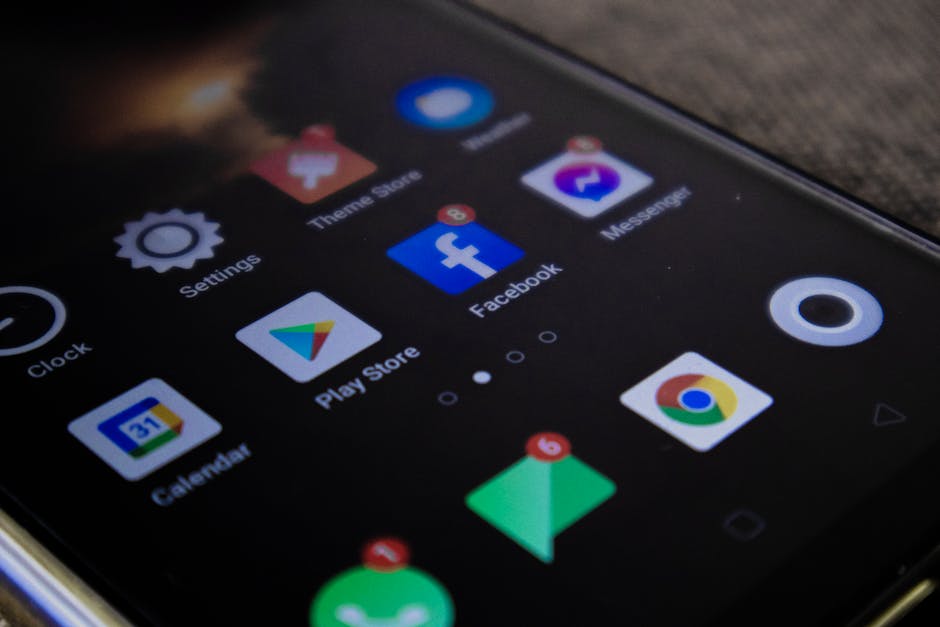How to Get an App Developed: A Step-by-Step Guide
In today’s digital age, mobile apps have become an integral part of our daily lives, transforming the way we interact with technology. From social networking to banking, and shopping to fitness, there’s an app for almost everything. If you’re wondering how to get an app developed, you’re not alone. Many individuals and businesses are looking to create their own mobile applications to reach a wider audience, improve user engagement, and drive growth.
The app development process can seem daunting at first, especially if you’re new to the tech world. However, by breaking it down into manageable steps, you can navigate this journey with confidence and clarity. This guide aims to provide a comprehensive roadmap, helping you understand each phase of the development process, from ideation to launch.
Whether you’re a startup looking to disrupt the market with a revolutionary idea or an established business aiming to enhance your customer experience, developing a mobile app can be a game-changer. With the right approach and resources, you can turn your vision into a reality. To kickstart your app development journey, get a free quote and connect with experts who can bring your idea to life.
Defining Your App Idea

Before diving into the technical aspects of app development, it’s crucial to have a clear and well-defined idea. This initial phase sets the foundation for the entire project and helps ensure that the final product aligns with your vision and goals. Start by identifying the problem your app aims to solve or the need it intends to fulfill. A successful app often addresses a specific pain point or provides a unique solution that sets it apart from existing alternatives.
Conduct thorough market research to understand your target audience and their preferences. Analyze competitors and identify gaps in the market that your app can fill. This research will not only validate your idea but also provide valuable insights into features and functionalities that users find appealing. Create user personas to represent your ideal customers and map out their journey to understand how they will interact with your app.
Once you have a clear understanding of your app’s purpose and target audience, outline the core features and functionalities. Prioritize these features based on their importance and potential impact on user experience. Keep in mind that it’s better to start with a minimal viable product (MVP) – a version of the app with essential features that can be launched quickly and improved upon based on user feedback.
Defining your app idea thoroughly at this stage will save you time and resources in the long run. It will also provide a solid foundation for the subsequent steps in the development process, ensuring that your app is both relevant and valuable to your intended audience.
Choosing the Right Development Approach
Once you have a well-defined app idea, the next crucial step is choosing the right development approach. This decision will significantly impact the cost, timeline, and overall performance of your app. There are primarily three approaches to consider: native, hybrid, and web app development.
Native app development involves building apps specifically for a particular operating system (iOS or Android) using platform-specific languages like Swift for iOS or Kotlin for Android. Native apps tend to offer the best performance and user experience because they are optimized for the specific platform. However, this approach can be more costly and time-consuming since it requires separate development efforts for each platform.
Hybrid app development uses technologies like HTML, CSS, and JavaScript to build apps that can run on multiple platforms from a single codebase. Frameworks such as React Native and Flutter are popular choices for hybrid development. While hybrid apps may not achieve the same level of performance as native apps, they can significantly reduce development time and costs by allowing code reuse across platforms.
Web app development involves creating applications that run in a web browser and can be accessed from any device with internet connectivity. Progressive Web Apps (PWAs) are a modern example of web apps that offer a native-like experience with offline capabilities and push notifications. Web apps are usually less expensive to develop but may not provide the same level of performance and user experience as native or hybrid apps.
When choosing the right development approach, consider factors such as your budget, timeline, target audience, and the specific features your app requires. Consulting with an experienced mobile app development company can also provide valuable insights and help you make an informed decision that aligns with your project goals.
Finding a Development Team

After deciding on the development approach, the next pivotal step is finding a development team that aligns with your project’s needs and vision. The right team can make the difference between a successful app and a costly failure. Here are some key considerations to help you find the perfect team:
1. Define Your Requirements: Clearly outline your project requirements, including the app’s features, target platforms, budget, and timeline. This will help you communicate your needs effectively and evaluate potential teams.
2. Look for Experience: Choose a team with a proven track record in mobile app development. Examine their portfolio to see if they have experience building apps similar to yours. Pay attention to their expertise in the chosen development approach (native, hybrid, or web).
3. Check Reviews and References: Look for client reviews and ask for references to gauge the team’s reliability and quality of work. Speaking directly with past clients can provide valuable insights into the team’s performance and communication skills.
4. Evaluate Technical Skills: Ensure the team has the necessary technical skills to handle your project. This includes proficiency in relevant programming languages, frameworks, and tools. Technical assessments or interviews can help validate their expertise.
5. Communication and Collaboration: Effective communication is crucial for the success of any development project. Choose a team that values transparency and is willing to collaborate closely with you throughout the development process. Regular updates and feedback loops are essential for staying on track.
6. Consider Cost and Location: While budget is an important factor, it’s essential to balance cost with quality. Offshore development teams can offer cost advantages, but consider potential challenges such as time zone differences and cultural barriers. Weigh these factors carefully before making a decision.
Investing time in finding the right development team can save you from future headaches and ensure that your app development project proceeds smoothly. A well-chosen team will not only bring your vision to life but also add value through their expertise and experience.
Designing and Prototyping Your App

Once you’ve secured a development team, the next critical phase is designing and prototyping your app. This step sets the foundation for the user experience and overall functionality, making it essential to get it right.
1. Understand Your Users: Begin by conducting user research to understand your target audience’s needs, preferences, and pain points. This will help inform your design decisions and ensure that the app resonates with its intended users.
2. Create User Personas: Develop detailed user personas that represent your ideal users. These personas will guide your design process and help maintain a user-centered focus throughout the development cycle.
3. Sketch Initial Ideas: Start with simple sketches or wireframes to visualize the app’s layout and flow. This stage allows you to experiment with different ideas and get a sense of how users will navigate through the app.
4. Develop High-Fidelity Mockups: Once you have a clear direction, create high-fidelity mockups using design tools like Sketch, Figma, or Adobe XD. These mockups should include detailed UI elements, color schemes, and typography to give a realistic representation of the final product.
5. Build Interactive Prototypes: Transform your mockups into interactive prototypes using tools like InVision or Marvel. Prototypes allow you to simulate the app’s functionality and gather feedback from stakeholders and potential users before moving to development.
6. Conduct Usability Testing: Test your prototypes with real users to identify any usability issues or areas for improvement. Gather feedback through surveys, interviews, or observational studies, and iterate on the design to enhance the user experience.
7. Collaborate with Developers: Maintain close communication with your development team during the design phase. This ensures that the design is technically feasible and aligns with the project’s goals and constraints.
Designing and prototyping are iterative processes that may require multiple revisions. However, investing time in this phase can significantly reduce development risks and lead to a more polished and user-friendly app. By prioritizing user needs and validating your design early, you’ll set the stage for a successful development journey.
Testing and Launching Your App

After the design and development phases are complete, the next crucial steps are testing and launching your app. These steps ensure that your app is not only functional but also provides a seamless user experience.
1. Conduct Thorough Testing:
- Unit Testing: Start with unit tests to verify that individual components of your app work as intended.
- Integration Testing: Ensure that different modules and services within the app interact correctly.
- UI/UX Testing: Conduct usability tests to ensure that the app is intuitive and user-friendly. This can include A/B testing to compare different design elements.
- Performance Testing: Check the app’s performance under various conditions, such as low network connectivity or high user load, to ensure it remains stable and responsive.
- Security Testing: Identify and fix vulnerabilities to ensure that user data is protected.
- Beta Testing: Release a beta version of your app to a select group of users to gather real-world feedback and identify any remaining issues.
2. Prepare for Launch: As you approach the launch date, create a marketing plan to generate buzz around your app. This can include social media campaigns, press releases, and influencer partnerships.
3. Submit to App Stores: Follow the guidelines for submitting your app to the Apple App Store and Google Play Store. Make sure to include an engaging app description, high-quality screenshots, and demo videos to attract potential users.
4. Monitor Post-Launch Performance: After the app is live, monitor its performance closely. Use analytics tools to track user engagement, retention rates, and other key metrics. Be prepared to release updates and bug fixes based on user feedback.
Testing and launching an app is a meticulous process that requires attention to detail and a commitment to quality. By thoroughly testing your app and strategically planning its launch, you can maximize its chances of success in a competitive market.
Ready to transform your app idea into reality? Get a free quote from our expert team at NS804 and take the first step towards launching a successful app today!



 https://www.pexels.com/photo/black-and-silver-laptop-computer-on-round-brown-wooden-table-1181243/
https://www.pexels.com/photo/black-and-silver-laptop-computer-on-round-brown-wooden-table-1181243/
Leave a Reply
Want to join the discussion?Feel free to contribute!